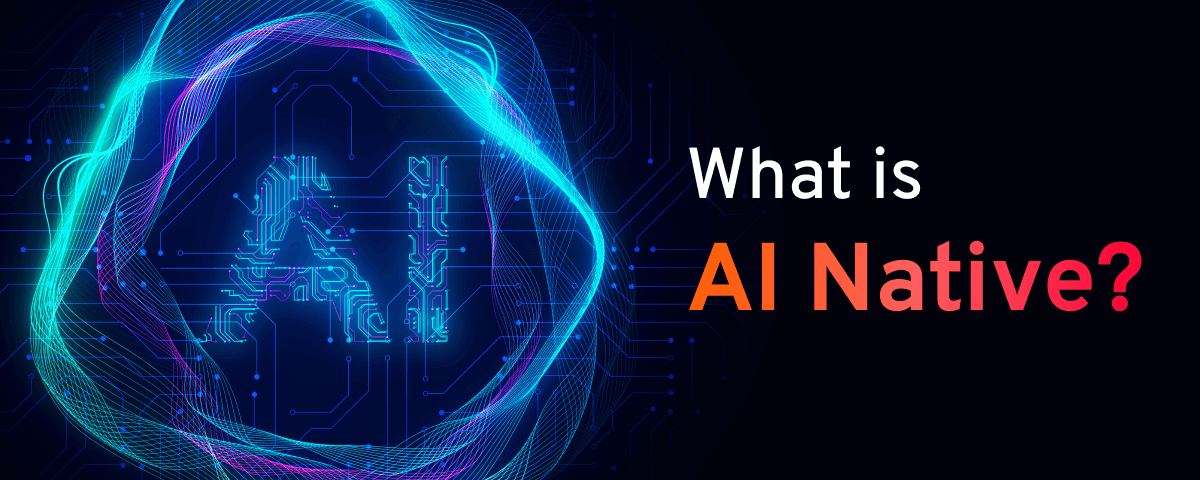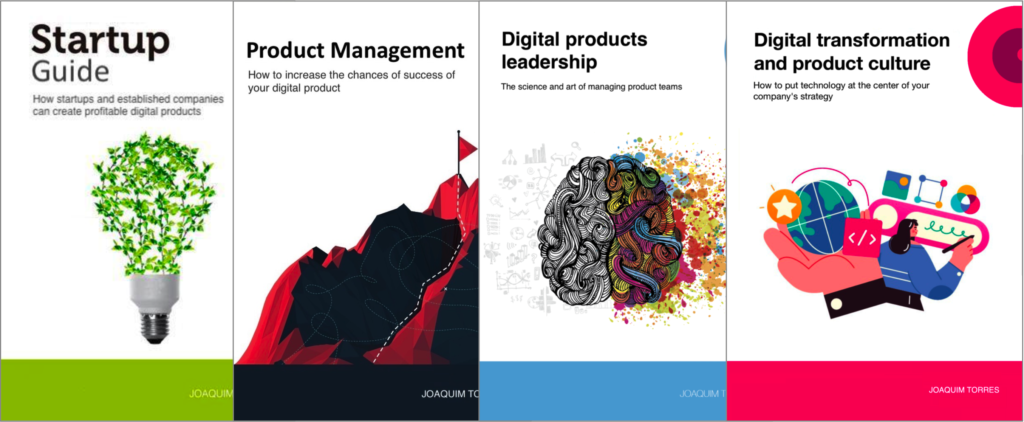
Product as a Boardroom Agenda
24 de June, 2025Everyone’s talking about AI-first. But what if the real leap is being AI-native?
When smartphones became popular, many companies adopted a mobile-first strategy, which meant prioritizing mobile usage while still building on a foundation designed for desktops.
Soon after, companies started to emerge that were mobile-native, meaning they designed their products, business models, and experiences from the ground up for mobile as the main platform. And that made all the difference.
Take, for example, companies like Facebook, Google, and LinkedIn, which had to adapt their user experiences to mobile, versus Instagram and WhatsApp, which were born with mobile as the primary platform. Facebook, Google, and LinkedIn had to make an effort, first adopting a mobile-first mindset and later acquiring mobile-native companies, such as Android (Google) and Instagram and WhatsApp (Facebook).
While those companies eventually adapted and became mobile powerhouses, others, like eBay, struggled to compete with apps like Shopee, which were mobile-native from the start and quickly gained traction in key markets. Shopee offered a more fluid experience from the beginning, its business model leveraged the unique dynamics of mobile, and its growth was driven by design choices native to that environment.
We are now witnessing something similar with AI. Discussing an AI-first approach is a good starting point. But the real leap happens when a product is AI-native — when AI is not just a priority, but the very foundation.
AI-native refers to a product that only makes sense with AI at its core, where the value delivered to customers depends directly on this technology, and where the business model, value proposition, and user experience are all shaped by it from the outset.
These are the types of companies that are now emerging. And just like with mobile, it may be difficult for those who weren’t born this way to compete at the same level.
To understand this new shift, it’s worth looking back at what happened with the previous generation of companies — the tech-natives — that used the internet as a foundation for disruption.
AI-native: a new generation of companies is being born
Google, Netflix, Amazon, Airbnb, Uber — companies we use every day that, in their own way, have reshaped the industries they operate in. They were born with technology at the core of their strategy — as I argue in my latest book, Digital Transformation and Product Culture: How to put technology at the center of your company’s strategy. Moreover, they were born into the Internet era. That’s why we call them tech-native, or more precisely, internet-native.
Computing has existed for decades. The first large-scale programmable electronic computer, ENIAC, was introduced in 1946. But it was only with the rise of the internet that technology left the back office and became a platform for disruption.
Tech-native companies reinvented how we search for information, move around, consume media, shop, and travel. And traditional companies had — and still have — to catch up.
A similar phenomenon is now occurring with artificial intelligence.
Just like the internet split the business world into before and after, we are now witnessing the birth of a new generation of companies: the AI-native. These companies are already being conceived in a world where AI is part of everyday life — and more than that, part of the core product, operations, and strategy.
These companies are not “adopting AI.” They are being built on top of AI, just like Netflix was built on top of the internet.
And this impact can happen across the three types of companies I describe in my book:
- Digital-native companies, where the product is the technology itself. We are already seeing AI-native examples, such as OpenAI, Midjourney, RunwayML, and JusticeText.
- Digitally born traditional companies, which offer traditional services but were born with technology at their core. DoNotPay, for instance, offers automated legal services and was built on an AI-driven value proposition.
- Traditional companies, whose core product didn’t originally depend on technology, but which are now beginning their AI transformation, just as they once underwent a digital transformation.
Just as tech-natives set new standards for experience, speed, and scale, AI-natives are about to redefine what it means to be competitive in many industries.
Examples that show the real power of AI-native products
If you’ve used ChatGPT, then you’ve already interacted with an AI-native product — and seen firsthand what it’s like when AI is at the core of the experience, not just a feature added later or even a design priority (AI-first). In an AI-native product, the business model, user experience, and product value all stem from AI.
Here are other examples of AI-native products showing how this technology can solve real-world problems in innovative ways:
- OpenAI: Creator of ChatGPT, which revolutionized access to natural language processing by offering a simple interface to interact with powerful language models like GPT-4.
- Midjourney: A platform for generating images from text prompts, used by designers, artists, and creators for expressive, AI-driven visuals.
- RunwayML: An AI-powered video creation platform offering tools for scene generation, background removal, and style transfer — increasingly used in advertising and content creation.
- JusticeText: Uses AI to analyze video, transcript, and audio evidence to help public defenders represent low-income defendants with more speed and accuracy.
- Be My Eyes + OpenAI: An app for visually impaired users that, with GPT-4’s help, describes environments, reads labels, and explains visual contexts using the smartphone camera.
- DoNotPay: Originally created to appeal traffic tickets automatically, it now helps users handle small legal disputes through AI-driven language tools.
- Pictory: Converts scripts or blog posts into short, narrated videos with music and automated edits — ideal for marketing and education.
- NotebookLM by Google: Creates summaries, insights, and even podcast scripts based on your documents, with synthetic voices simulating conversations between hosts.
- Wondercraft: Transforms articles into podcasts using AI-generated realistic voices, background music, and effects. You can even clone your own voice.
These tools show how AI is already solving tangible problems — from social justice to accessibility, from creative automation to knowledge democratization.
If you haven’t tried any of them yet, give it a go. In just a few minutes, you’ll experience what it means to interact with a truly AI-native product — writing, researching, creating, or visualizing with AI by your side.
More than productivity: intelligence at the core of the product
There’s a significant difference between using AI to automate tasks — as IT has been used in the past — and utilizing it to build truly intelligent products that solve problems more efficiently, at scale, and with personalization.
AI has unique capabilities. Today, most of the hype surrounds generative AI, encompassing text, images, video, music, and even apps. This exploded after OpenAI launched ChatGPT in late 2022. However, AI has long excelled in classification, recognition, and recommendation. And more importantly, all these capabilities improve with use.
This means we can now create products that learn, evolve, and deliver more value over time, for both customers and the business.
Another important point: AI-based solutions are not deterministic — it’s not about A or B. They’re probabilistic — assigning degrees of confidence to multiple options. That’s much closer to how the real world works, where things aren’t black and white. Most decisions we face are, in fact, probabilistic.
In AI-native companies, the question “how will we solve this problem?” starts with what AI is capable of. Just as in tech companies, the available technology serves as the foundation for the solution.
This mindset is what differentiates one-off AI usage from a real product transformation. It’s not just about productivity. It’s about designing products with AI from the ground up.
I’ve lived on both sides.
Throughout my career, I’ve worked in companies with very different cultures and values. At Locaweb and Conta Azul, the product was the technology itself. These were digital companies — software at the center of the business, with product, tech, and strategy deeply intertwined from day one.
Later, I joined Gympass — a classic case of a digitally born traditional company. It offered a corporate wellness benefit (physical gym access), but it was built with technology as a strategic capability connecting users, clients, and partners.
More recently, I had the opposite — and equally transformative — experience at Lopes, a traditional real estate company with over 85 years of history. It recognized the need to undergo digital transformation to compete with newcomers like Loft and QuintoAndar, which were tech-first from the outset.
At Lopes, back in 2020, we were already saying we were going beyond digital transformation — we were promoting a data-based transformation. Without knowing it, we were flirting with the concept of AI-native before the generative AI boom in late 2022.
The company had a rich data set on properties, which we used to build automated valuation algorithms, recommendation systems, and tri-matching solutions between customers, properties, and agents.
One example: the original similar-property recommendation system was basic, using three static variables (property type, price, neighborhood). We replaced it with a smarter system that utilizes ten static variables, combined with ML models trained on user clicks. Results were impressive:
- From 72% to 99.5% of properties with similar matches.
- 83% growth in the number of similar property matches.
- 106% increase in clicks and 20% increase in generated leads.
This experience showed how strategic use of data and AI can be a game-changer, even in traditional industries. It was about reframing culture, processes, and strategy. Building bridges between business and tech. And placing product management at the heart of the company direction.
These experiences made it clear to me how different it is to be born with technology at the center — and what it takes to bring it to the center later. With AI, this difference is likely to become even more profound.
What about companies that weren’t born AI-native?
Most existing companies weren’t born AI-native — just like traditional companies weren’t tech-native or internet-native. That’s not a problem — it’s just reality. But it’s one we need to acknowledge and address.
The challenge now is to recognize that we’re entering a new wave of transformation. Repeating past mistakes — such as denial, minimization, waiting for maturity, or dismissing it as a trend — can be costly.
AI is not just a new productivity tool. It’s a foundational technology that can make even the most traditional products smarter. More useful to customers. More efficient for the business.
Tech-natives are playing catch-up.
Something interesting — and revealing — is happening right now. Many of the companies that once symbolized the digital revolution are now scrambling to catch up with the AI revolution.
Google is embedding Gemini directly in search results because users were turning to ChatGPT for answers. Amazon added generative AI to Alexa. YouTube is testing automatic summaries and content generation. Spotify is integrating voice-based assistants. Meta has rolled out image and text generation tools in Instagram and WhatsApp.
These companies were the poster children for being tech-native, and often internet-native as well. However, they now need to become AI-native — or at least find a way to compete with those who already are.
The game has changed. And the former leaders now need to adapt.
In closing, what should companies do now?
Companies that weren’t born AI-native need to respond, as many did during the digital era, by experimenting, learning quickly, and putting AI at the center of what they do.
That means going beyond automating internal tasks. It means exploring how AI can transform the product itself. How it can help solve customer problems faster, better, or more affordably. How can it create hard-to-copy competitive advantages?
At the end of the day, AI’s biggest promise isn’t just operational efficiency. It’s about enabling a new generation of products — products that learn, evolve, and solve problems better than ever before.
We are entering a new cycle. Those who adapt quickly can leap ahead. Those who take too long may get left behind — again.
More articles on AI
Here are some other articles I’ve written recently on AI:
- Artificial Intelligence and Product Management (Jan/24)
- Fasten your seatbelts, we’re at a turning point! Again! (Mar/24)
- A Practical Guide to AI for Product Managers (Mar/25)
- Do you think writing is a bad technology for humanity? (Apr/25)
- The internet inspired. AI sparks fear. Why? (May/25)
Workshops, coaching, and advisory services
I’ve been helping companies and their leaders (CPOs, heads of product, CTOs, CEOs, tech founders, and heads of digital transformation) bridge the gap between business and technology through workshops, coaching, and advisory services on product management and digital transformation.
Digital Product Management Books
Do you work with digital products? Do you want to know more about managing a digital product to increase its chances of success, solve its user’s problems, and achieve the company objectives? Check out my Digital Product Management books, where I share what I learned during my 30+ years of experience in creating and managing digital products:
- Digital transformation and product culture: How to put technology at the center of your company’s strategy
- Leading Product Development: The art and science of managing product teams
- Product Management: How to increase the chances of success of your digital product
- Startup Guide: How startups and established companies can create profitable digital products


